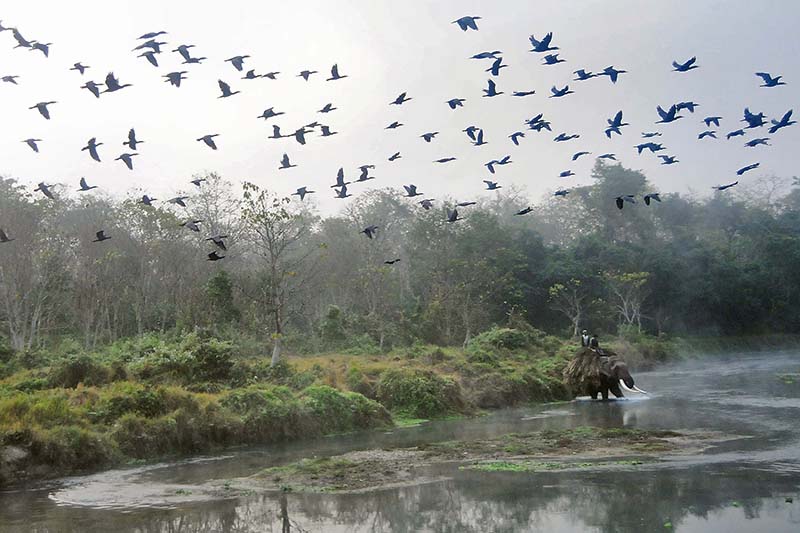Bird Conservation Nepal records 13,749 birds in Valley
Kathmandu, December 31
The first urban bird monitoring 2016 has recorded a total of 13,749 individual birds from rural to urban gradients of Kathmandu Valley.
Bird conservationists and researchers participated in the monitoring that was conducted by the Bird Conservation Nepal on January and June/July 2016.
This number accounts for a total of 102 bird species. Of them, 85 species of birds with 6,496 individual birds were recorded in winter and 63 species of birds with 7,253 individual birds were recorded in summer.
Researchers have said that the diversity of species had significantly decreased from rural to urban gradients.
“We found very low species diversity in urban areas that might be due to a lack of habitat and reduced food availability,” Krishna Prasad Bhusal, one of the participants of the monitoring and Conservation Officer of BCN told The Himalayan Times.
According to the monitoring report, the common pigeon was the most common bird species based on the number of individual birds recorded.
A total of 4,545 common pigeons were recorded, 2,339 in winter and 2,206 in summer. Similarly, the house sparrow was identified as the second most common bird in urban and adjacent areas with 2,327 individual birds of this species.
Likewise, 2,147 house crows were recorded, 827 common mynas, 765 cattle egrets, 426 Eurasian tree sparrows, 360 barn swallows, 308 jungle mynas, 243 red-vented bulbuls, and 159 black kites were recorded.
According to the BCN study, urbanisation has affected the distribution of birds in Kathmandu Valley. However, long term monitoring and analysis of different environment variables are still necessary to analyse the effect of urbanization in birds in the Valley.
Researchers recorded a higher number of resident bird species at 82 species, followed by winter migrant species at 16, and summer migrant species at 4.
Urban habitats can be monitored using birds as an ecological indicator. Different habitat enrichment, like presence of exotic plants, high human density, road, industry, and buildings make urban habitats more complex. There is a strong need of conservation activities to protect the existing biodiversity in urban areas.
Kathmandu is the most urbanised city in Nepal with a population of around four million people. More than 500 species of birds were recorded at Kathmandu Valley in 2008, while around 160 species are recorded only from the urban and its adjacent areas of Kathmandu Valley.
“The increasing human density is narrowing the habitat of urban birds in the Valley. Modern housing practices, environmental pollution, high tension lines, lack of fruiting trees, and other factors are contributing to the decrease in bird population in the capital,” the monitoring report reads.
The urban bird monitoring program divided Kathmandu into three gradients: urban, sub-urban, and rural based on core residential area to monitor the birds.






